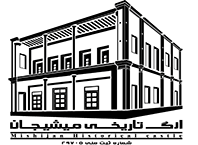
Khomein is located at the southern region of Markazi, 60 kilometers away from Arak and 310 kilometers away from Tehran. Khomein is bounded to Arak at the north, Mahalat at the East, Golpaigan at the south, and Azna and Aligudarz at West. With an area of ۲۳۹۴ square kilometers, Khomein once used to be a part of Jebal, a vast province called different names throughout history. Greeks called it media. In Islamic scripture, Jebal have been referred to as Kuhestan, Jabal, Ghahestan, Foreigh Iraq, etc. Later on, a large part of Foreign Iraq was named Timreh. Then, it was divided into upper and lower section, where Khomein was developed across the former. Evidently, the popularity of Timreh dates back to pre-Islamic and early Islamic centuries onwards. The most recent resources mentioning Timreh can be traced back to the fifth and seventh centuries AH. For the next four centuries, there are no conclusive evidence available to identify the region. However, an Arabic book titled Nazhat al-Gholub from the eighth century AH has pointed out a few characteristics of the region, indicating that Timreh was later changed to Kemreh pronounced by people living currently in Golpaigan. The name Khomein has for the first time been mentioned in a book titled Kings and Prophets by Hamzeh Esfahani.
Geographically, this city is situated 1,800 meters above sea level. The rugged terrain at northwestern of Khomein stretch out to Zagros Mountain Range. The most important mountains in this region are Dez, Bujeh and Haft-savaran. Khomein is a city influenced by a variety of climatic characteristics. The weather keeps changing, so that the climate across north-western mountains is mild, while the center and south are semi-arid. For that reason, Khomein experiences very cold winters and mild to warm summer in different areas. Khomein has two towns called Khomein and Gurchibashi, two central areas and Kemreh. The central area includes five districts called Salehan, Galehzan, Rastagh, Hamzehlu, Ashnakhor. Kemreh covers two
districts called Khoramdasht and Chaharcheshmeh, which hosts a total of 182 villages.
The cultural and religious features of the city are 23 holy shrines, mosques and markets, more than 21 thousand identified petroglyphs, defensive fortresses, dovecotes, a few historic mansions such as Salar Mohtasham Castle and Mishijan Citadel, historic stone chamber, underground tunnels, historic bridges, historic public bathrooms, historic Islamic and Armenian cemeteries and a series of aqueducts. One of the spiritual heritages involves a ritual called Nakhlgardani, where palm trees are carried around.
Moreover, Khomein is the birthplace of Imam Khomeini, the founder of the Islamic Republic of Iran. Imam’s old house, a building from the Qajar era, is located in Khomein, visited by hundreds of thousands of tourists every year. Imam Khomein spent his adolescence in this city.
As for tourist attractions, there are seasonal rivers beside which all the villages have been stretched. Moreover, there are numerous springs and mountains ranges in an intact nature mesmerizing any viewer.
The oldest known manmade petroglyphs dating back to more than forty thousand years age can be found in Khomein.
There is a wide variety of handcrafted products such as carpets Lillian, Jajim and Ghadakbafi in Chaharcheshmeh, rugs embellished with flower patterns, and pottery in Burjak
Currently, there are many artists engaged in craftsmanship fields such as weaving rugs embellished with flower patterns, sculpture, mosaic tiles, carving precious stones and other activities.
The population of the city according to Iranian Census 2001 is a total 107,368 people. The language spoken in this region is Farsi, while the local people in the southern regions speak Lori, a Farsi dialect. Moreover, several villages speak Azeri Turkish. The city’s economy is based on agriculture and animal husbandry. The famous souvenirs from Khomein are honey, saffron, walnuts, almonds, grapes, raisins, grape juice, beans and other livestock and agricultural crops.
BY : Ali Mohammad Panahi

